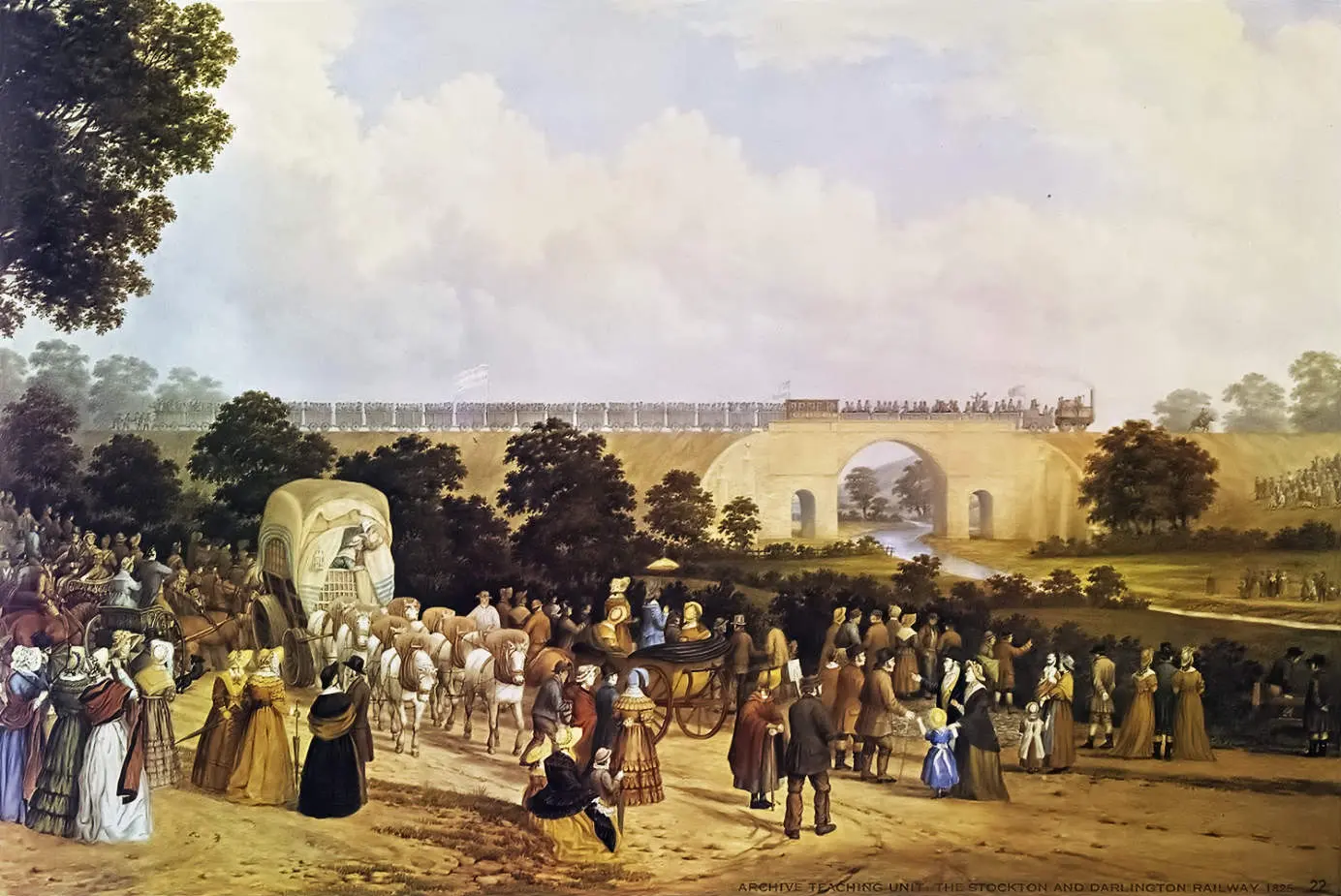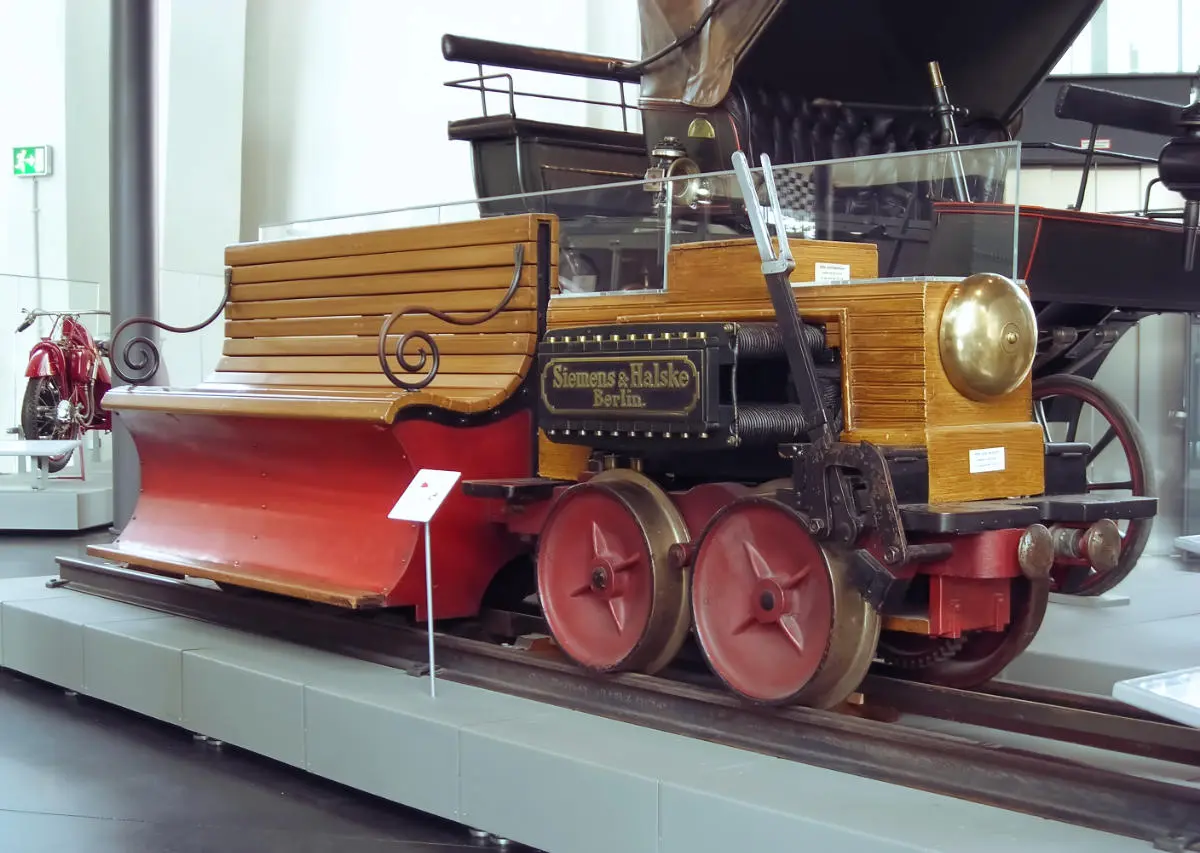Why Was the Railroad So Important? A Historical Exploration
The railroad played a significant role in shaping the modern world. Discover why the railroad was so important in terms of economic development, industrialization, and connecting communities.
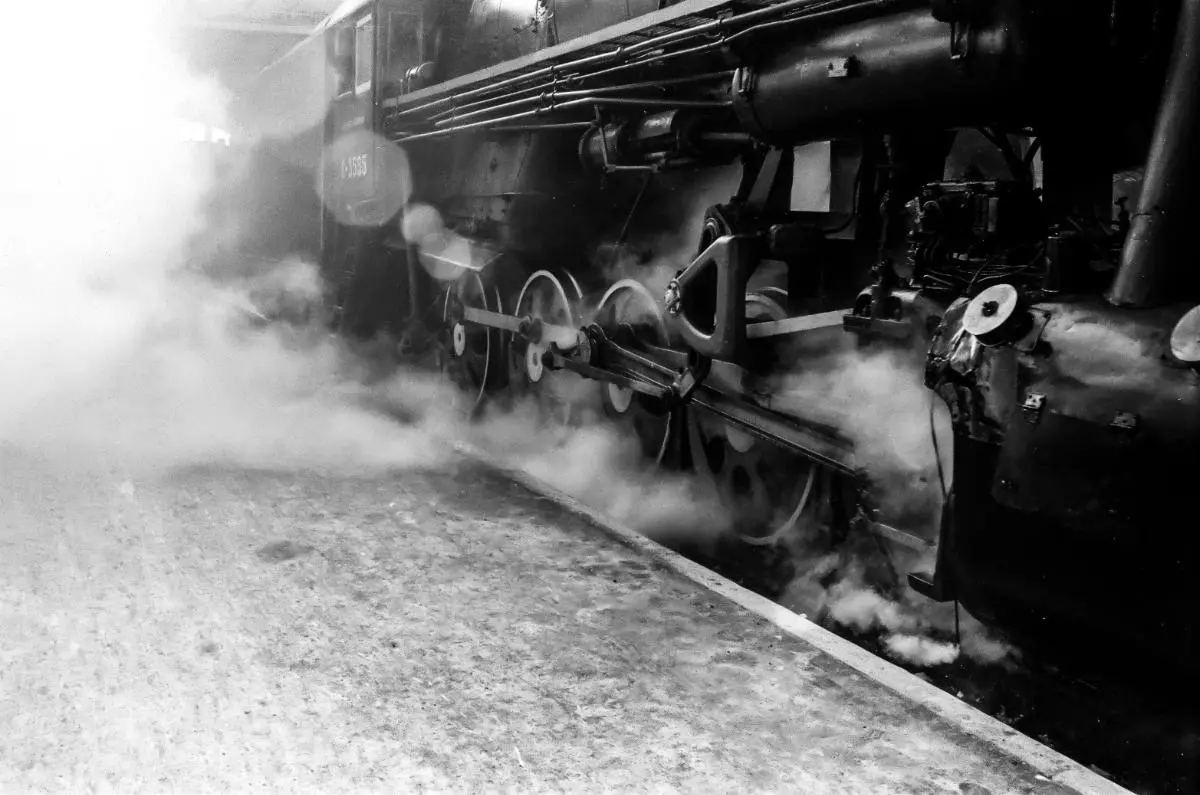
Why was the railroad so important?
This is a question that prompts a journey back to a period of significant change in human history - a time when a groundbreaking piece of technology transformed economies, societies, and even warfare.
In this exploration, we'll delve into the historical significance of the railroad, and its profound influence on the world we know today.
The Railroad: A Catalyst for Economic Growth
When it comes to economic advancement, the influence of the railroad is undeniable. Acting as the linchpin in the history of technology, the advent of the train played a critical role in ushering in the industrial revolution, particularly in the United States and Europe. The railroad was not just a mode of transport, but a dynamic economic tool, generating productivity and profits across a wide range of sectors.
The capabilities of the rail system went beyond what previous modes of transport could provide. It offered an efficient, reliable, and quick method for transporting goods and raw materials from one place to another. This enhanced accessibility and speed revolutionized many industries, from agriculture to mining. Farmers were able to reach distant markets, expanding their potential customer base and increasing their profitability. Similarly, manufacturers could distribute their products more extensively, and mines could deliver their minerals to processing facilities in a fraction of the time.
The railroad network acted as an economic powerhouse, sparking growth and development on an unprecedented scale. By simplifying and expediting the flow of goods, the railroad underpinned the rapid expansion of commerce during the industrial revolution, offering an efficient pathway to prosperity.
Crucially, the rail system also facilitated the creation of jobs. From the railway construction workers to the train operators, and from the manufacturers producing railroad materials to the businesses leveraging the rail network for distribution, the railroad was instrumental in creating new employment opportunities.
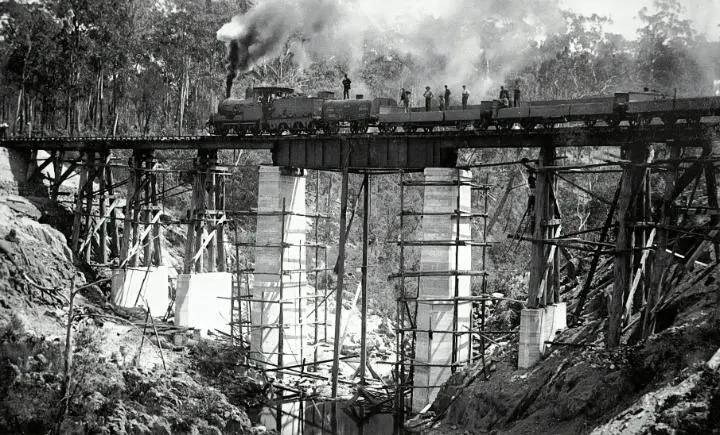
In essence, the railroad served as a powerful economic engine, driving growth and prosperity in ways that were previously unimaginable. Its impact was felt across all sectors of the economy, accelerating industrialization and paving the way for the modern economies we see today. It is no exaggeration to say that without the transformative power of the railroad, the economic landscape as we know it would be significantly different.
Connecting Distant Regions and Markets
With the construction of each rail line, the railroad network spanned across countries, bringing remote areas into economic activity by bridging geographic gaps. The vast expanses between towns and regions, previously perceived as impenetrable barriers, were effectively surmounted. Railways linked the heartlands with coastal ports, and isolated rural regions with bustling urban centers, ensuring goods produced in remote areas could reach a wider market.
The railway didn't just build physical connections, but it created and nurtured economic relationships. It enabled goods to be traded across previously impossible distances, stimulating economic growth and diversification. This network fostered a sense of unity, creating a more interconnected and interdependent world. As rails crisscrossed the landscape, so too did a web of economic opportunities, fostering a new era of trade and commerce.
More than just a transportation system, the rail network was a catalyst for change. It allowed goods, people, and ideas to traverse vast distances, shrinking the world in the process. As a result, towns and cities that had once been self-contained economies found themselves part of a larger, national, and eventually international economic structure. This created a ripple effect of development, as economic growth in one region could stimulate growth in others.
The rail network also played a crucial role in the development of the modern global economy. By breaking down geographic barriers to trade, it laid the groundwork for the interconnected global marketplace we see today. With the railroad, the world saw the dawn of a new age, one where economic growth and prosperity were no longer confined by geographic limitations. In essence, the railway gave birth to a more interconnected and globalized world. It served as the arteries of trade and commerce, pulsating with goods, people, and opportunities, bringing about an era of unprecedented economic integration.
Boosting Population Movement and Urbanization
The power of the railroad extended far beyond the movement of goods. It was a significant player in population migration and the emergence of urbanization. The fast and efficient transportation that rail provided meant that individuals could journey further than ever before, enabling a greater mobility of population. As a result, an increased number of people began to migrate towards towns and cities, leading to significant urban growth. This influx of population to urban areas fueled the development and expansion of cities.
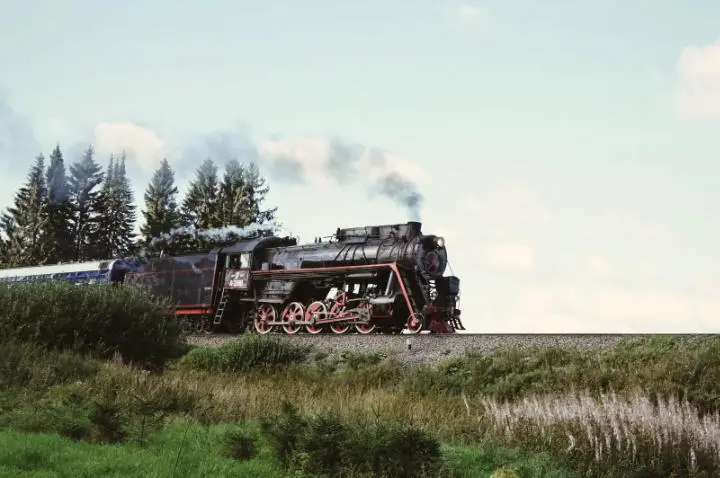
Rail routes were not random; they were strategically placed, often resulting in new settlements springing up along these lines. Areas that had been remote and largely uninhabited suddenly found themselves connected to the wider world. These settlements grew into bustling towns and cities, propelled by the commerce and trade opportunities that the railroad offered.
This accelerated urbanization brought about a new wave of economic development. With larger populations came increased demand for goods and services, fostering the growth of local businesses. In turn, these businesses provided employment, drawing even more people to the cities. This cycle of growth resulted in the sprawling urban landscapes that are so familiar today.
However, this shift was not just economic. It also had a profound social impact, transforming the way people lived. Rural life was replaced with an urban existence, bringing with it new social dynamics and challenges. The growth of cities led to a shift in societal structure, altering people's lives on a fundamental level.
The railroad, then, played a pivotal role in shaping modern societies by acting as a conduit for population movement and urbanization. It was not just a vehicle for goods, but also for people, ideas, and societal change. The birth and growth of cities, the shift from rural to urban living, and the evolution of societal structures - these seismic changes were all, to a large extent, driven by the arrival and expansion of the railroad.
The Railroad's Impact on Communication
Before the advent of the railroad, the dissemination of information was largely dependent on the speed of a horse. The introduction of trains fundamentally altered this reality, ushering in an era where mail could travel as swiftly as the locomotive. This drastically decreased the time required for news to disseminate, marking a monumental shift in the dynamics of communication.
With this change, business dealings could progress at an unprecedented rate. Decision-making became more efficient, as entrepreneurs could react to market changes and opportunities in a timely manner, boosting their chances of success. The railway also made an impact in the political sphere. Leaders and strategists could now relay and receive vital information rapidly, enabling them to make informed decisions more swiftly, which could shift the course of political events.
The ability to transmit information quickly not only accelerated the pace of life during the 19th and early 20th centuries but also fostered a more informed society. Public awareness of national and international events increased, as newspapers and letters could be transported quickly over long distances. This allowed people to stay abreast of developments beyond their immediate surroundings, leading to a more connected and engaged populace.
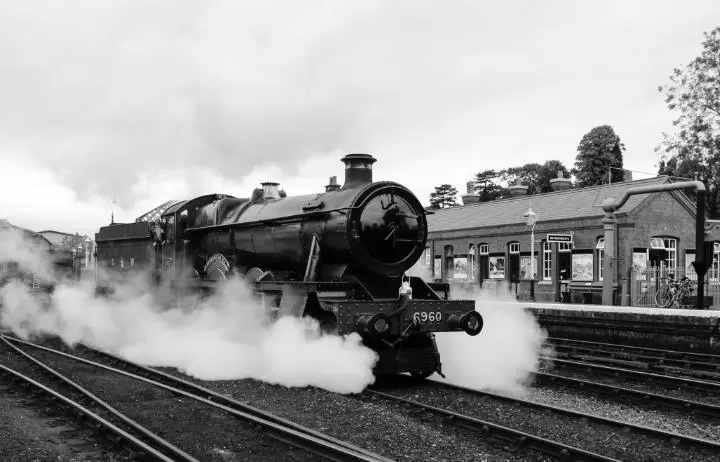
This rapid communication also had cultural implications. Ideas, trends, and cultural expressions could now spread quickly across the country, leading to the emergence of a shared national culture. As trains crisscrossed regions, they also carried with them new ideas and perspectives, promoting cultural exchange and broadening societal horizons.
Therefore, the railroad's impact on communication was transformative. It quickened the pace of life, revolutionized business and politics, enhanced public awareness, and contributed to cultural exchange. The railroad shrunk distances, not just in the physical sense but also in the realm of communication, knitting society closer together with its steel threads of rapid information transmission.
Revolutionizing Transportation and Trade
The advent of the railroad ushered in a new era for transportation and trade, reshaping their fundamental dynamics. Prior to the railroad, transportation of goods was often slow, cumbersome, and expensive. The introduction of trains challenged this status quo, making the movement of goods quicker, more efficient, and economically feasible.
Railroads allowed large quantities of products to be transported at high speed over vast distances, outperforming previous modes of transportation such as horse-drawn carriages or canal barges. This speed and efficiency revolutionized trade by drastically reducing the time it took for goods to reach markets. Additionally, railroads proved to be more cost-effective than traditional methods, as they could carry larger loads, minimizing the per-unit transportation cost.
Furthermore, the railroad expanded the reach of trade, overcoming the geographic constraints that previously limited commerce. The dense network of rail lines connected distant regions, effectively shrinking the marketplace and increasing the potential customer base for businesses. With the railroad, previously isolated regions could participate in the broader economy, selling their goods in far-off markets.
The expansion of railroads also influenced the nature of trade, encouraging specialization of production. Producers could focus on manufacturing products that they had a competitive advantage in, confident in the knowledge that they could efficiently transport these goods to markets where they were in demand. This paved the way for a more complex and integrated economy, characterized by an increased division of labor and inter-regional trade.
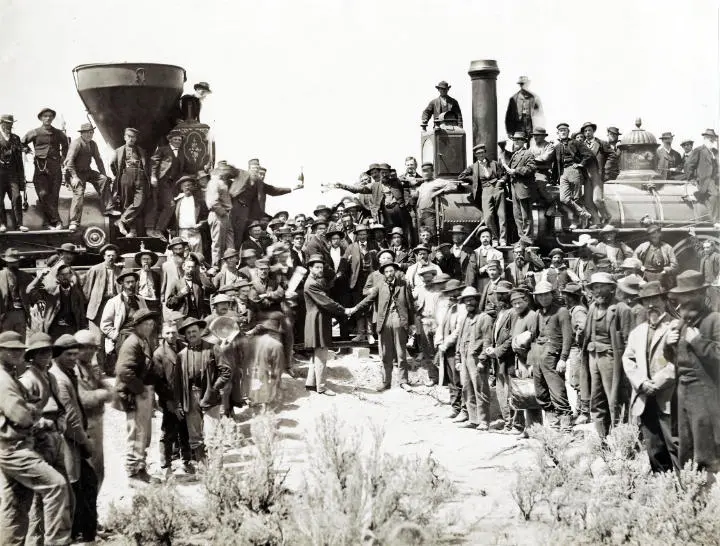
Additionally, the predictability and reliability of train schedules facilitated long-distance trade, as merchants could plan their business operations with greater certainty. This created a sense of stability and predictability in the market, further fueling trade activities.
The railroad, thus, fundamentally transformed the transportation and trade landscapes. By offering speed, efficiency, cost-effectiveness, and expanded reach, it paved the way for the flourishing of commerce on a national and international scale. The dawn of the railroad era marked the beginning of modern trade dynamics, setting the stage for the globalized economic system we see today.
The Railroad’s Role in Wars and Conflicts
The railroad's influence extended even into the theater of war, altering the dynamics of conflict and military strategy. Trains, with their unparalleled capacity for speed and transportation, served as a game-changing asset on the battlefield. They offered an efficient method of rapidly deploying troops, equipment, and supplies to front lines, fundamentally shifting the balance of power in favor of those nations with extensive rail infrastructures.
Consider, for instance, the American Civil War. The Union had a distinct advantage thanks to their superior rail network. The ability to quickly transport soldiers, food, munitions, and other essential resources over long distances enabled them to efficiently sustain their war efforts. Similarly, during the World Wars, the efficient transportation of vast numbers of soldiers and the rapid delivery of critical supplies were made possible by trains. In essence, railroads proved to be a strategic asset in warfare, enabling quick responses to changing battle scenarios and ensuring that forces were equipped and prepared.
But the significance of the railroad in warfare wasn't just logistical. The rail network also had a profound impact on military strategy. The ability to rapidly move troops meant that military leaders could execute strategic maneuvers and surprise attacks with unprecedented speed. The railroad's influence permeated even to the realm of tactics, altering the very way wars were fought.
Hence, the railroad's role in wars and conflicts was transformative. It was not just a means of transportation, but a powerful tool that shaped military strategies and outcomes. Its ability to rapidly move troops and supplies granted nations a strategic advantage, and its role in altering military tactics and strategy was just as pivotal. Far from being just an economic powerhouse, the railroad emerged as a strategic military asset, underscoring its influence in yet another sphere of human endeavor.
Conclusion
Reflecting on the profound impact of the railroad, it's clear that this revolutionary mode of transport was much more than just a technological innovation. It was an instrument of change, fueling economic growth, promoting urban development, revolutionizing communication, and even altering the course of wars.
The railroad broke down geographic barriers, opening up new markets and fostering trade on an unprecedented scale. It facilitated the growth of cities and shifted societal structures. It accelerated the speed of communication, creating a more connected and informed society. It also played a strategic role in conflicts, changing military tactics and strategies.
As we examine the tapestry of history, the railroad's threads are interwoven throughout, marking it as a key driver of progress and transformation. The legacy of the railroad continues to resonate, reminding us of our capacity for innovation and progress.
Also read:
